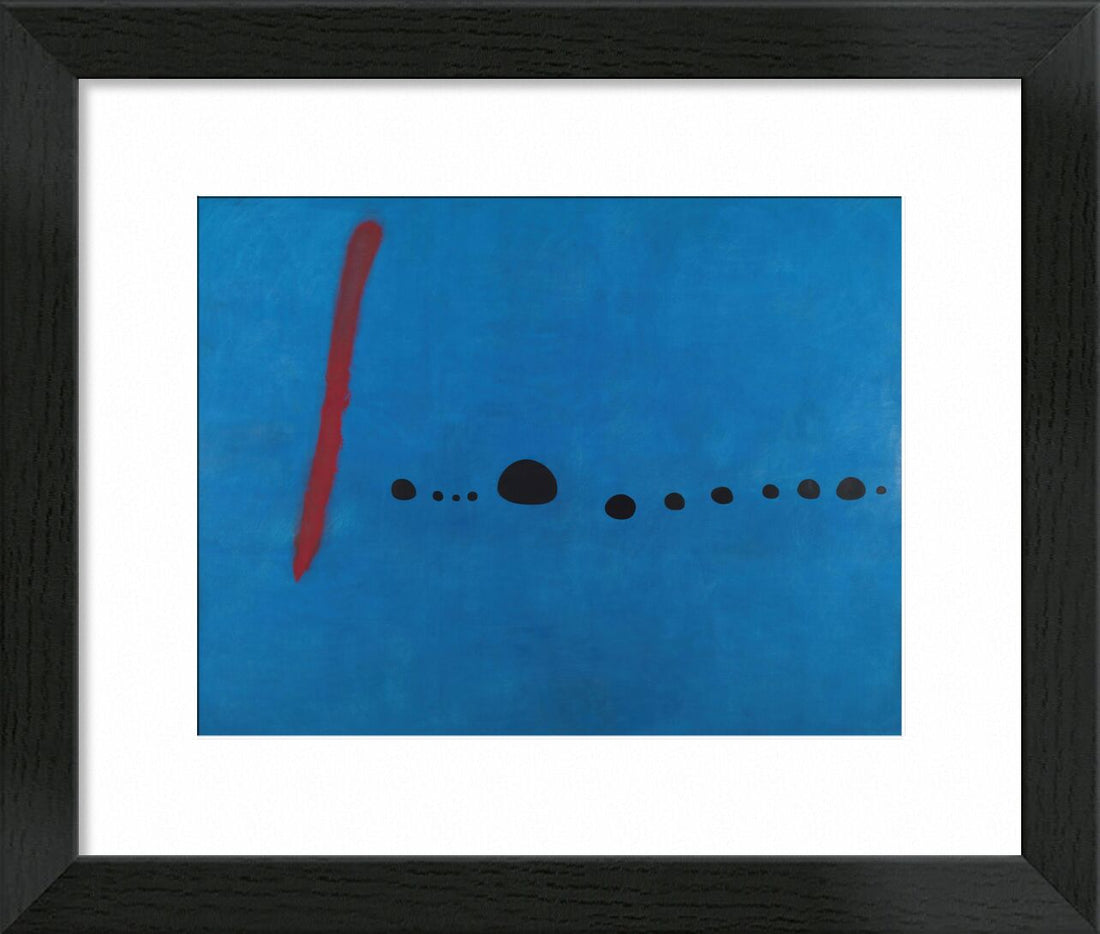
Joan Miró – Blue II (1961): Minimalist Abstract Painting of Poetic Simplicity
Joan Miró’s Blue II (1961) is part of his celebrated “Blue” triptych, a series that captures the Catalan artist’s playful yet deeply poetic approach to abstraction. The canvas is dominated by a vast expanse of deep, luminous blue, broken only by a few minimal gestures—thin black lines, subtle curves, and a single red dot. At first glance, the composition appears sparse, but its simplicity is the source of its power.
Miró was a master of visual economy, distilling his imagery down to the most essential forms. In Blue II, the space is alive with possibility, and every mark feels intentional. The large field of blue evokes a sense of freedom, infinity, and serenity, while the black lines and red accent introduce a whimsical tension. The work invites viewers to engage their imagination, much like reading a haiku—minimal words, maximum meaning.
Created in the later stage of his career, the “Blue” series reflects Miró’s lifelong quest to balance childlike spontaneity with deliberate precision. Blue II is not only a painting but also an environment—standing before it, one feels surrounded by sky or sea, drifting into an abstract dreamscape.
The painting demonstrates how abstraction can convey mood and narrative without depicting specific objects. For Miró, Blue II was a meditation on purity, color, and the emotional impact of space. It remains one of his most iconic works, beloved for its elegance and poetic resonance.
Join our collection
